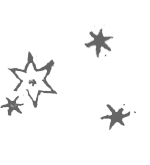Manuscript
Manuscript
| 0 |
Secret Book of the Quiver Ise, Heizo Sadatake (ca. 1846) Manuscript copy by Hajime Terai from original written in 1765 by Ise; illustrations copied by Odani. |
|
| 2 |
Ethiopian Bible Augustine served as the Bishop of Hippo in the Roman province of Africa, or present-day Algeria. The formative influence of northern Africa upon later European culture was both immense and diverse. |
|
| 3 |
Demonstration of the Halo Reinhold, Erasmus (c. 1550) This manuscript contains two transcriptions of a university lecture by Erasmus Reinhold. The diagrams are nearly identical to Aristotle’s discussion of halos in the Meteorology. Reinhold was a well-known Wittenberg astronomer, sympathetic to Copernicus. |
|
| 3 |
Chronicle of Mathematics Baldi, Bernardino Bernardino Baldi was an Italian mathematician whose work gives insight into the milieu of Galileo. This is one of two autograph manuscripts by Baldi held by the Collections. |
|
| 4 |
Innovative Sundials Baldi, Bernardino (ca. 1592) This manuscript, a never-published treatise on sundials written in the author’s own hand, was lost in the 18th century and believed destroyed in a shipwreck. Baldi studied with one of Galileo’s teachers, Guidobaldo del Monte. |
|
| 6 |
On the Errors of the Trinity Servetus, Michael (ca. 1700) Servetus, an anatomist, astrologer, physician and polymath was an early proponent of the pulmonary circulation of the blood. In 1553, Servetus was burned at the stake in Geneva. |
|
| 8 |
Treatise on the Sphere Grassi, Oratio (1623) In the same year that Galileo published The Assayer, Grassi delivered these lectures to Jesuit students in the Rome College (Collegio Romano). |
 |
| 18 |
Book of the Arrow Nobutoyo, (ca. 1846) Galileo’s mechanics demonstrated that projectiles follow a parabolic path. This is true whether the projectile is a cannonball, an arrow or a football. This set of four Japanese Samurai manuscripts, drawn on rice paper in the mid 1800’s, was copied by hand from mid-16th-century sources. |
|
| 19 |
Book of Leggings Nobutoyo, (ca. 1846) Galileo’s mechanics demonstrated that projectiles follow a parabolic path. This is true whether the projectile is a cannonball, an arrow or a football. This set of four Japanese Samurai manuscripts, drawn on rice paper in the mid 1800’s, was copied by hand from mid-16th-century sources. |
|
| 20 |
Secret Book of Hunger for the Target Ise, Heizo Sadatake (ca. 1846) Galileo’s mechanics demonstrated that projectiles follow a parabolic path. This is true whether the projectile is a cannonball, an arrow or a football. This set of four Japanese Samurai manuscripts, drawn on rice paper in the mid 1800’s, was copied by hand from mid-16th-century sources. |





